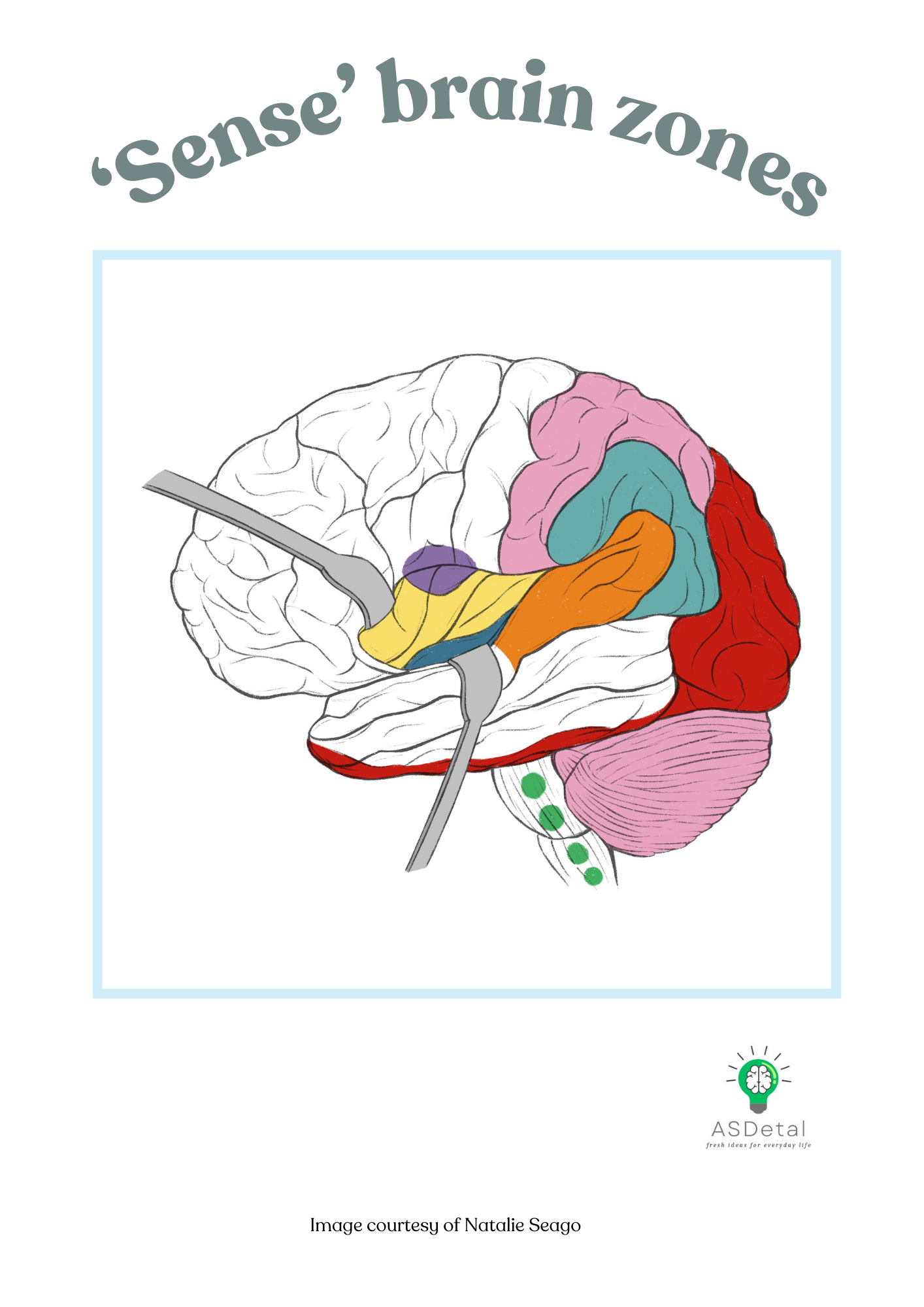What is 'sensory'?
'What is sensory?' is a common question, and it can be confusing to begin with. However, it's worth persevering to 'make sense' of it for yourself, as it can really help you to understand your child, their behaviour and their reactions.
Briefly, sensory inputs come from internal and external sources. These inputs are then processed by various sensory systems in the body. Together, they provide us with a comprehensive, up-to-the-minute report about our internal and external worlds, right now. We all use sensory information and each of us has our individual preferences.
Our senses play a vital role in our understanding of 'what's happening?' to us, and around us, at any given moment in time.
If we have difficulties in 'picking up on', processing, or responding to, this sensory information then it has an impact on our everyday activities.
Over time, it can also impact on well-being. Children with sensory processing difficulties can frequently experience mental health problems such as high anxiety and/or depression. The links for this are not well-studied. Which comes first and how do they impact on each other, for example?
Differences and difficulties in processing sensory information is common across most, if not all, neuro-different conditions. Research indicates that between 69%¹ and 90%² of children with Autism have marked sensory issues. Whist this is a less well-studied area for children with ADHD, it is recognised that sensory processing problems are more common than in typically developing children³.

The image above illustrates how much of our brain is processing sensory-based information at any given time. I call these the Sense Brain Zones'.
Sensory information that the brain is constantly detecting and processing includes:
- Visual inputs - taken in by the eyes and processed by the visual system in the brain, for example colour, light, and brightness variations, recognising objects letters and numbers etc.
- Tactile inputs - picked up through sensors in the skin, for example physical contact, pressure, vibration, pain, and temperature
- Auditory inputs - the ears pick up sound waves which allow us to hear noises, words etc.
- Olfactory inputs - the nose detects odour molecules in the air which enable the sense of smell to be processed by the olfactory system in the brain
- Gustatory inputs - taste buds on the tongue pick up on chemical substances in food and drinks, thereby providing a sense of taste.
The above 5 senses are the most commonly known ones and take in information from outside of us, in our immediate environment.
Three less well known senses are responsible for processing information from inside of us. These are:
- Interoceptive signals - these are messages sent to the brain from our internal organs and tissues about their current state. These may be messages about hunger and fullness, thirst, heart rate and breathing, emotional state, pain or discomfort etc.
- Proprioceptive signals - processes information from muscles, tendons, and joints. It tells us about the position and movement of our bodies such as joint position (angle and position of the limbs), muscle movement and stretch (length and tension), whole body movement and balance (the equilibrium and orientation of the body)
- Vestibular signals - changes in head position and movement are detected in the inner ear and then reported to the vestibular nuclei in the brain for response. It helps us to stay upright against gravity.
Information about Sensory Processing Disorders and the issues that may arise when the brain processes sensory information differently, can be found here.

1. Baranek GT, David FJ, Poe MD, Stone WL, Watson LR. Sensory Experiences Questionnaire: discriminating sensory features in young children with autism, developmental delays, and typical development. J Child Psychol Psychiatry. 2006 Jun;47(6):591-601. doi: 10.1111/j.1469-7610.2005.01546.x. PMID: 16712636.
2.Leekam SR, Nieto C, Libby SJ, Wing L, Gould J. Describing the sensory abnormalities of children and adults with autism. J Autism Dev Disord. 2007 May;37(5):894-910. doi: 10.1007/s10803-006-0218-7. PMID: 17016677.
3. Ghanizadeh A. Sensory processing problems in children with ADHD, a systematic review. Psychiatry Investig. 2011 Jun;8(2):89-94. doi: 10.4306/pi.2011.8.2.89. Epub 2010 Nov 20. PMID: 21852983; PMCID: PMC3149116.